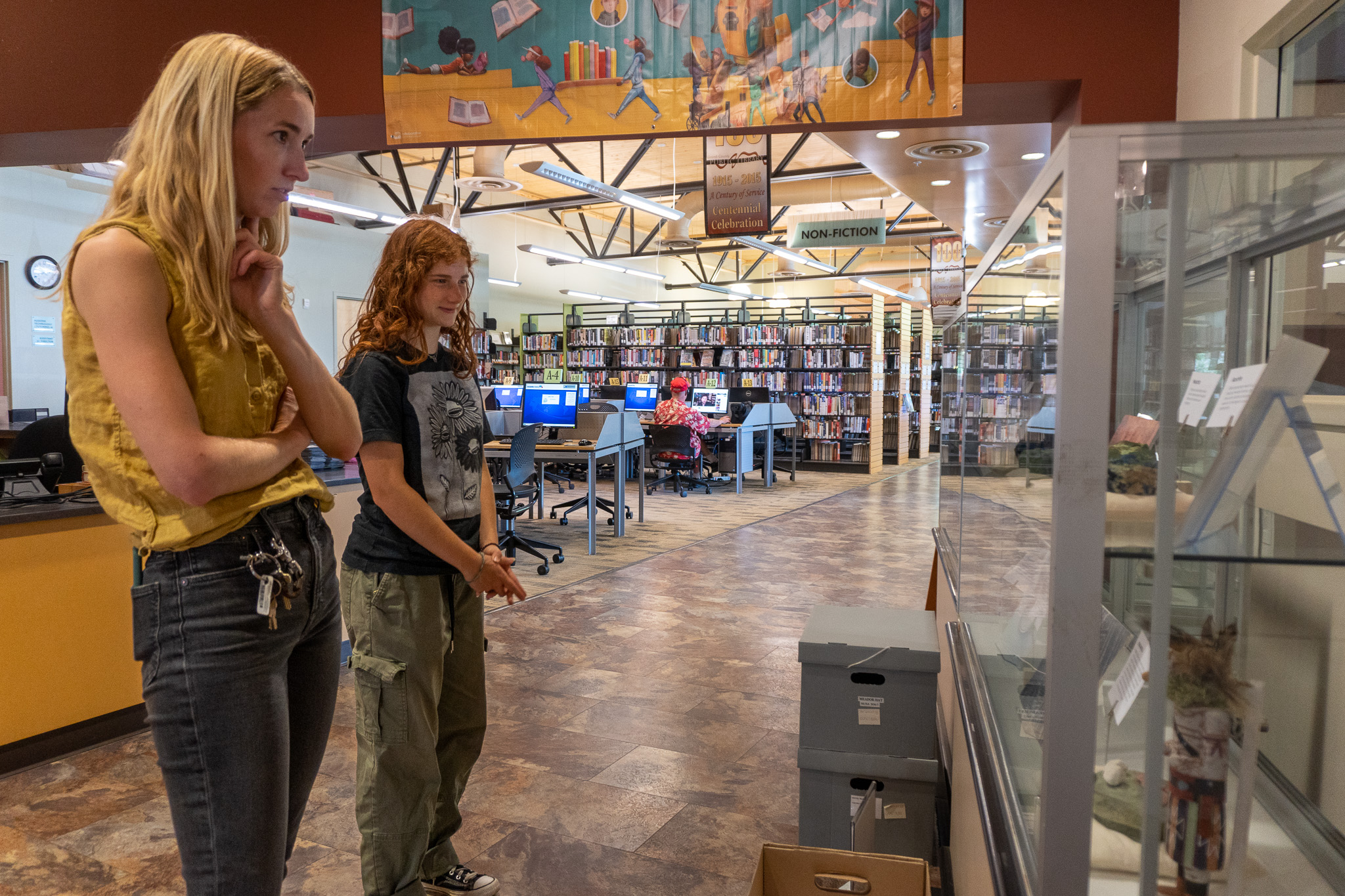Kierra Kirks’s work explores local history, geology
When Kierra Kirks, a recent graduate of Grand County High School, started her internship with Science Moab’s School to Science program, she only knew she wanted to work with rocks. She had a few ideas—maybe she could sort through and organize old geology records.
The School to Science program, in partnership with Grand County High School Career and Technical Education, connects local students to scientific careers by offering job shadows, internships, and field trips. What Kirks landed on for her spring-to-summer internship was a two-part project: she would work with Mary Langworthy at the Moab Museum to identify rocks and minerals in the museum’s collection, and turn that work into an exhibit on display at the Grand County Public Library.
“I thought that’d be really fun,” Kirks said. “Museums are really cool, and I thought this would be an amazing opportunity to try something new.”
Her exhibit will be on display at the Grand County Public Library through early 2024.

Kirks is primarily interested in geology and enjoyed working with Langworthy, who is a trained geologist. She wanted to make the final exhibit interesting to visitors: instead of creating an exhibit with just labeled specimens, she and Langworthy developed a display that wove together the identified specimens with their places in history.
The exhibit explores the history of uranium mining in Moab and how local minerals were used as pigments in pottery, Katsintitu (kachina dolls), and pictographs; on display are mineral samples, photos, and uranium mining relics.
“Pictographs, or images painted onto the surface of rocks, record stories from numerous cultural groups—and often feature vibrant colors,” an exhibit display reads. “Many of the region’s pictographs are red-brown in color. These pigments are often made from oxidized iron found in numerous regional rock layers.”
What Kirks hopes people learn from the exhibit is how vast and fascinating this region is, past and present, she said. The town has changed and grown exponentially: the exhibit follows the history of the region from when pictographs were being created on rock walls to the uranium boom.
Kirks said she loved the entire process of putting the exhibit together, from the initial geology research (she first identified minerals in the museum’s collection like malachite and azurite, both of which are on display), to the historical research (figuring out how and which mineral pigments created the paint for Katsintitu), to putting the exhibit together into two display boxes.
“I’d love to do more with museums,” she said. “I think history is really fun and cool … It was a great experience, and I think more people should do Science Moab programs.”
The exhibit is on display at the Grand County Public Library, just outside the children’s room.




